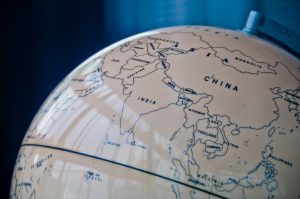India’s Vice President Jagdeep Dhankhar is visiting Phnom Penh, Cambodia from November 11 to 13. During his visit he will attend the ASEAN-India Commemorative Summit on November 12 and the 17th East Asia Summit on November 13. Both sides are expected to review the status of their strategic partnership during the summit.
This year marks the 30th anniversary of ASEAN-India relations and is being celebrated as the ASEAN-India Friendship Year. India’s focused engagement with ASEAN started in 1992 when India launched its Look East policy and became a sectoral dialogue partner of ASEAN. In 1996 India became a dialogue partner and subsequently a summit level partner in 2002. At the 20th Commemorative Summit held in New Delhi in 2012, India-ASEAN relations were elevated to a strategic partnership. In 2014, India revamped the Look East policy as the Act East policy to add strategic focus to engagements with ASEAN. During the summit in Phnom Penh, India will reportedly be granted the status of a comprehensive strategic partnership by ASEAN.
Following the launch of the Act East policy, India-ASEAN relations witnessed certain positive trends. In 2018, India invited the leaders of all the 10 ASEAN member countries as chief guests for the Republic Day celebration on January 26. In the same year, on June 1, India’s Prime Minister Narendra Modi delivered the keynote address at the Shangri-La Dialogue in Singapore.
In his speech, Modi outlined India’s vision for the Indo-Pacific region. While indirectly raising concerns about China’s assertions in the South China Sea, Modi emphasized that ASEAN would be at the center of India’s policy for the Indo-Pacific region. Despite stating ASEAN-centrism as a pivotal factor to India’s outlook towards the Indo-Pacific region, India-ASEAN ties have not been enhances as much as expected. However, despite focused overtures, India’s engagements with ASEAN have largely remained restricted to the economic and socio-cultural domains.
Simultaneous to India reshaping its policy toward ASEAN, the Quadrilateral Security Dialogue, or the Quad, witnessed a revival. After being dormant for a decade, the Quad started to take shape again in 2017 with Australia, India, Japan, and the United States engaging regularly and elevating engagements in an accelerated manner. In the years since 2017, India’s interactions with the Quad as a group and with individual members in a bilateral formant have increased. The diplomatic engagements of the Quad are backed up by the Malabar Exercise conducted by all four member countries of the group. While India’s engagements with the Quad have accelerated, ASEAN countries continue to remain on the fringe in India’s policy landscape.
Countering China remains India’s prime objective in strategic projection, particularly in Southeast Asia. However, with India falling short of providing a viable alternative, China continues to dominate the economic and strategic landscape in Southeast Asia. China has been ASEAN’s largest trading partner since 2009. ASEAN became China’s largest trading partner in 2020 and remains so. ASEAN’s total trade with China in for the period January to April 2022 amounted to $274.50 billion, while India’s total trade with ASEAN from April 2021 to March 2022 was $78.90 billion.
While China’s strategic aggression in the South China Sea is a concern for some ASEAN members, divisions within the grouping are a major impediment. ASEAN member countries remain divided due their own internal conflicts (with regard to Myanmar, for example) as well as their views toward China’s assertive policies. Divisions within ASEAN are a challenge for India since it is difficult to interact with a divided institution. Furthermore, the dilemma in ASEAN’s approach is evident when it tilts toward China for economic cooperation while expecting the United States to act as a balancing power in the strategic domain.
In the face of these challenges, the comprehensive strategic partnership should be an opportunity for India to reorient its strategic approach to ASEAN. The partnership would enable India and ASEAN to cooperate in areas like energy, health, investments in Make in India, technology, climate change, etc. India must take advantage of the elevation of ties to push for greater economic cooperation. Despite divisions within ASEAN, India would need to drive home the point of diversifying supply chains with ASEAN.
The comprehensive strategic partnership should also strengthen India’s maritime profile in the Southeast Asia. The elevation of ties could ensure greater coordination between India’s Indo-Pacific Oceans Initiative (IPOI) and ASEAN’s ASEAN Outlook on Indo-Pacific (AOIP). This synergetic approach could further enable India and ASEAN to work closely on maritime domain awareness. Greater maritime cooperation with ASEAN would complement ASEAN-centrism which is a core principle of India’s as well as the Quad’s policy towards the Indo-Pacific Region.
The new level of partnership between India and ASEAN presents an opportunity for India to uplift its presence among the ASEAN countries and pursue ASEAN-centric policies more effectively.

































